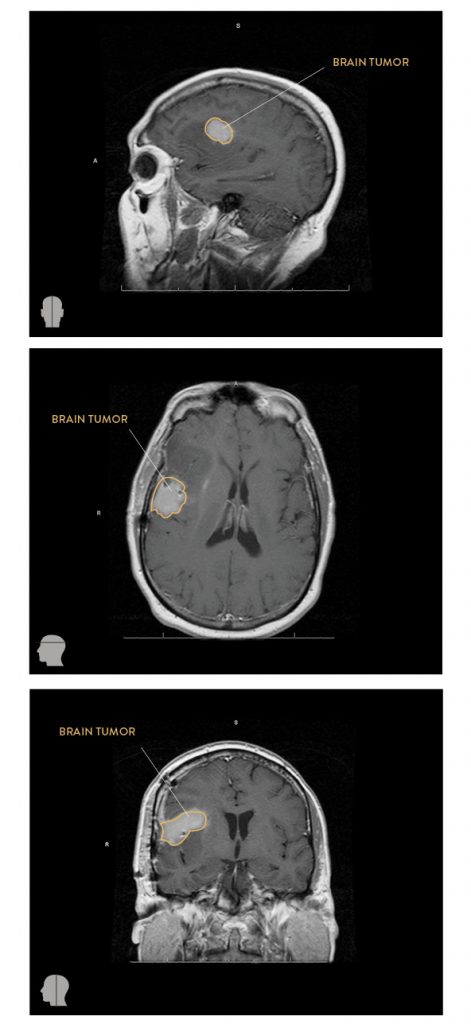When a brain tumor is suspected or confirmed, your doctor will have you undergo one or more tests to diagnose or monitor it. Tests may also help determine effective treatments. The most effective test to diagnose a brain tumor is an MRI scan. While tests can strongly suggest the presence of a tumor, only a biopsy of suspected tumor tissue that has been surgically removed provides the definitive diagnosis.
MRI
An MRI scan is typically the preferred test for people who may have a brain tumor.
Biopsy
A biopsy is usually done to confirm the diagnosis and determine what type of tumor it is.

Imaging Tests
MRI Scan (Magnetic Resonance Imaging)
An MRI, which uses magnetic fields (not x-rays), provides detailed images of the body and can also measure the tumor’s size. An MRI creates a more detailed picture than a CT scan because the MRI outlines the normal brain structure in unique detail and is the preferred imaging test to diagnose a brain tumor.
This procedure takes about one hour and requires the patient to lie still in a cylinder-type machine. A special dye is given (as a pill or an injection) before the scan to create a clearer picture and distinguish tumors from healthy tissue.
CT Scan (Computed Tomography or CAT Scan)
A CT scan reveals brain abnormalities. This is a sophisticated x-ray machine linked to a computer to create 3-D images. It is painless and can be completed in ten minutes or less. Occasionally, a special dye is injected into the bloodstream to provide more detail. CT scans provide less anatomic detail than an MRI and are typically only used initially or if the patient cannot have an MRI.
Other Tests That May Be Performed
PET Scan (Positron Emission Tomography)
A PET scan may be used to determine brain tumor activity,blood flow, or the effect of the tumor on the brain. A small amount radioactive tracer substance (such as amino acids or sugar) is injected into the bloodstream.
Your doctor can then use a scanner to observe the movement of that substance through the blood and in the brain.
Lumbar puncture (or spinal tap)
A lumbar puncture obtains spinal fluid to determine the presence of tumor cells.


